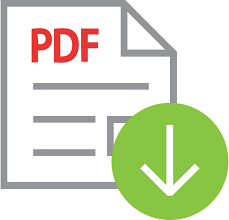Improving students’ achievements on application letter material through differentiated instruction learning
 (1),
(1),
(1) Sekolah Menengah Atas Negeri 1 Batam
 Corresponding Author
Corresponding Author
Copyright (c) 2024 Apriceli Apriceli Marcell
DOI : https://doi.org/10.29210/1202323532
Full Text:
 Language : en
Language : en
Abstract
Keywords
References
Abrori, Noor Achmat, 2023. Pentingnya Pembelajaran Bahasa Inggris di Sekolah. https://cabdindikwil1.com/blog/pentingnya-pembelajaran-bahasa-inggris-di-sekolah.
Al-Jarf, R. (2022). Difficulties in learning English plural formation by EFL college students. International Journal of Linguistics, Literature and Translation, 5(6), 111-121.
Arviana, N. (2014). Penerapan Pendekatan Differentiated Intructions untuk Mengembangkan Kemampuan 145 Pemecahan Masalah Matematika Siswa Kelas VIII SMP Pada Materi Kubus dan Balok. Jurnal Ilmiah Pendidikan Matematika Mathedunesa, 3(3), 1-8.
Dewi, Ratna Puspita. (2014). Penerapan Metode Pembelajaran Role Playing untuk Meningkatkan Motivasi dan Hasil Belajar Siswa pada Pembelajaran IPS di Sekolah Dasar. JPGSD 2(3), 1-11.
Edwards, E., & Burns, A. (2016). Action research to support teachers’ classroom materials development. Innovation in Language Learning and Teaching, 10(2), 106-120.
Fedosejeva, J., BoËe, A., Romanova, M., Ivanova, O., & Iliko, Dz. (2018). Education for sustainable development: The choice of pedagogical approaches and methods for the implementation of pedagogical tasks in the Anthropocene age. Journal of Teacher Education for Sustainability, 20(1), 157ñ179.
Heasly, B., Lindner, J., Iliko, Dz., & SalÓte, I. (2020). From initiatives, to insights, to implementation of the sustainability and securitability agenda for 2030. Discourse and Communication for Sustainable Education, 11(1), 1ñ4.
Impedovo, M. A., & Ferreira-Meyers, K. (2019). Expanding use of research-based teaching practices after an international master course. Transformative Dialogues: Teaching & Learning Journal, 12(1), 1ñ13.
Ismajli, H., & Imami-Morina, I. (2018). Differentiated instruction: Understanding and applying interactive strategies to meet the needs of all the students. International journal of Instruction, 11(3), 207-218.
Kusuma, O.D., Luthfah, S., (2020). Memenuhi Kebutuhan Belajar Murid. Modul PGP AKT 8. Kementerian Pendidikan
Maley, A., Kiss, T., Maley, A., & Kiss, T. (2018). Becoming a Creative Teacher. Creativity and English Language Teaching: From Inspiration to Implementation, 181-201.
Mirke, E., Cakula, S., & Tzivian, L. (2019). Measuring teacher-as-learnersí digital skills and readiness to study online fPalupi, R. E. A. (2021). Students’ Speaking Anxiety: Ready or Not. ELE Reviews: English Language Education Reviews, 1(1), 61-71.
Pipere, A., Veisson, M., & SalÓte, I. (2015). Developing research in teacher education for sustainability: UN DESD via the Journal of Teacher Education for Sustainability. Journal of Teacher Education for Sustainability, 17(2), 5ñ43.
Pysarchyk, O. L., & Yamshynska, N. V. (2015). The importance of integrating reading and writing for the EFL teaching. Advanced education, (3), 77-83.
Rao, P. S. (2019). The role of English as a global language. Research Journal of English, 4(1), 65-79. Slameto, (2013), Belajar Dan Faktor-Faktor Yang Mempengaruhinya, Jakarta: Rineka Cipta, hal. 26 Tri.
Rutherford, D. J., & Lovorn, C. (2018). Research-based program development: Refining the service model for a geographic alliance. Journal of Geography, 117(2), 88ñ98.
Sugiyono. (2013). Metode Penelitian pendidikan. Pendekatan Kuantitatif, Kualitatif dan R&D. Bandung : Alfabeta.
Tambunan, A. R. S., & Siregar, T. M. S. (2016). Students Motivation in Learning English Language (A Case Study of Electrical Engineering Department Student). Universitas Negeri Negeri Medan: Medan.
Widiati, Utami., Zuliati Rahmah., and Furaidah. (2015). Bahasa Inggris untuk kelas SMA/MA/SMK/MAK, cetakan ke-1. Published by Pusat Kurikulum dan Perbukuan, Balitbang, Kemdikbud, ISBN: 978-602-282-000-0. Jakarta.
Wijaya, K. F. (2021). English Education Master Students' Self-Regulated Learning Strategies in Academic Writing. Journal of English Teaching, 7(1), 15-29.
 Article Metrics
Article Metrics
 Abstract Views : 264 times
Abstract Views : 264 times
 PDF Downloaded : 0 times
PDF Downloaded : 0 times
Refbacks

This work is licensed under a Creative Commons Attribution 4.0 International License.


